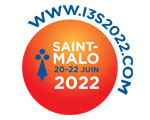
Your account
Programme
SESSIONS
1. Interactions between salmonella, hosts and microbiota
Isabelle VIRLOGEUX-PAYANT (France) and Guntram GRASSL (Germany)
Salmonella is a facultative intracellular bacterium found within a variety of phagocytic and non-phagocytic cells and able to infect a large variety of hosts belonging to the animal and plant kingdoms. In recent years, our vision of Salmonella host cell interaction has considerably evolved. The new paradigm is that Salmonella can enter cells through a variety of invasion factors and cannot only lie in a vacuole but can also evade into the cytosol. Moreover, some bacteria can multiply within cells or not. Last but not least, its virulence potential varies according to the host microbiota. The first aim of this session is thus to discuss the evolution of Salmonella-host interaction paradigms. The second aim is to analyze the cross talk between Salmonella, its hosts, and the corresponding microbiota.
2. Ecology and epidemiology along the food chain and beyond
Marianne CHEMALY (France) and Dariusz WASYL (Poland)
Epidemiological investigations for sampling and tracing Salmonella contamination throughout the food chain is the main focus of this session which covers the contamination of the food chain by Salmonella, from farm to fork. Communications addressed to this session should deal with the contamination and follow-up of animals or plants at the primary production level, the contamination during processing and at the retail level. Communications covering emerging serovars in domestic and wild animals are also welcomed in this session.
3. Risk assessment and control measures
Laurent GUILLIER (France) and Koen DE REU (Belgium)
The impact on risk of control measures for Salmonella applied along the farm to fork chain is the main scope of this session. Communications addressed to this session should deal with concrete examples on control measures or with modelling approaches for exposure assessment, risk characterization. Source attributions models are also welcomed in this session.
4. Antimicrobial resistance and horizontal gene transfer
Benoît DOUBLET (France) and patrick MAC DERMOTT (United States of America)
Antimicrobial resistance is one of the biggest public health challenges of our time. Fighting this threat is a public health priority that requires a collaborative global approach across sectors. Although most human Salmonella diarrheal infections are self-limiting, invasive infections can occur that require antimicrobial therapy. Over the past decades, emergence of multidrug resistant serotypes of Salmonella have been observed and in rare events resistances to critically important antibiotics which can cause treatment failures.
This session will focus on the molecular epidemiology of emerging antimicrobial resistant serotypes of Salmonella. All antimicrobial resistance mechanisms will be considered such as target modification, protection of the target, efflux, decreased permeability, enzymatic inactivation as well as induction of resistance mutagenesis... All horizontal gene transfer mechanisms implicated in the successful spread of mobile genetic elements harbouring resistance genes (plasmids, integrative elements,...) will be also of interest for this session.
5. Whole Genome Sequencing and comparative genomics
François-Xavier WEILL (France) and Jay HINTON (United Kingdom)
Over the last decade, high throughput whole-genome sequencing has revolutionized Salmonella genomics. This session is therefore dedicated to the use of whole genome sequencing in particular for :
1-comparative genomics, population structure, evolution and phylodynamics of emerging and/or multidrug resistant Salmonella populations,
2- surveillance of Salmonella infections.
Communications can cover any of the following fields: bioinformatics infrastructure and analysis tools, genomic data and nomenclature, feasibility studies, compatibility with current typing and subtyping methods.
6. New tools for detection and characterization of Salmonella
Anne BRISABOIS (France) and Padmini RAMACHANDRAN (United States of America)
Traditional cultivation, isolation and serotyping as well as molecular detection, identification and strain characterization will be the scope of the session entitled ‘Detection and Characterization’. Since their early development in the first half of the 20th century, conventional cultivation, serotyping and phage typing methods allowed long-term epidemiological surveillance and characterization of most Salmonella isolates issuing from routine analyses. However, with a public health objective, the ever-increasing safety criteria requested by the food chain actors and stakeholders, alternative methodologies popped up aiming at detecting, identifying and quantifying Salmonella in a fast, robust and traceable way and are continuously evolving. Numerous molecular characterization methods able to substitute or to complement traditional serotyping and sub-typing literally exploded during the last 25 years. Some alternative fingerprinting approaches reach or overtake classical methods in terms of sensitivity, some of them allow contamination and outbreak tracing, others allow sound phylogenetic analyses to be conducted. PCR-based methods significantly reduced the time required to detect and quantify Salmonella in various raw or pre-enriched matrices. During this session, novel and alternative methodologies for Salmonella detection and characterization will be explored except those based on whole genome sequencing (session ‘Genomic and applications’).
7. Epidemiology and Public Health
Nathalie JOURDAN DA SILVA (France) and Robert TAUXE (United States of America)
Salmonella is an important public health challenge in many countries. Improved surveillance and investigations supported by whole genome sequencing are better defining the nature of the challenge. This session will provide updates on the emerging Salmonella strains, vehicles of transmission, and potential to target improved prevention measures.





